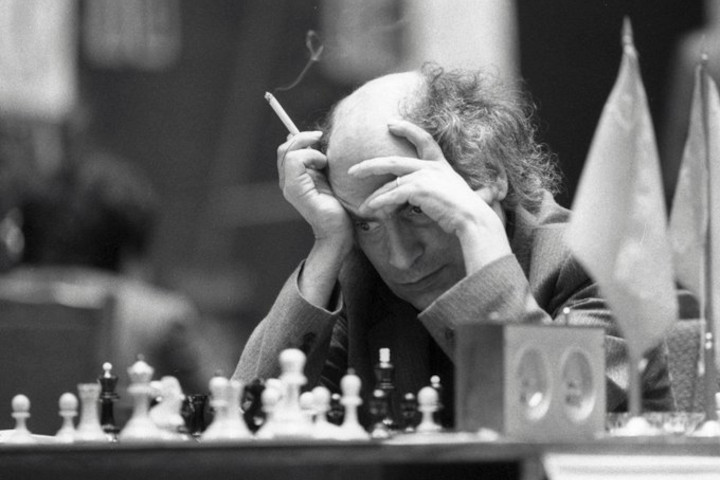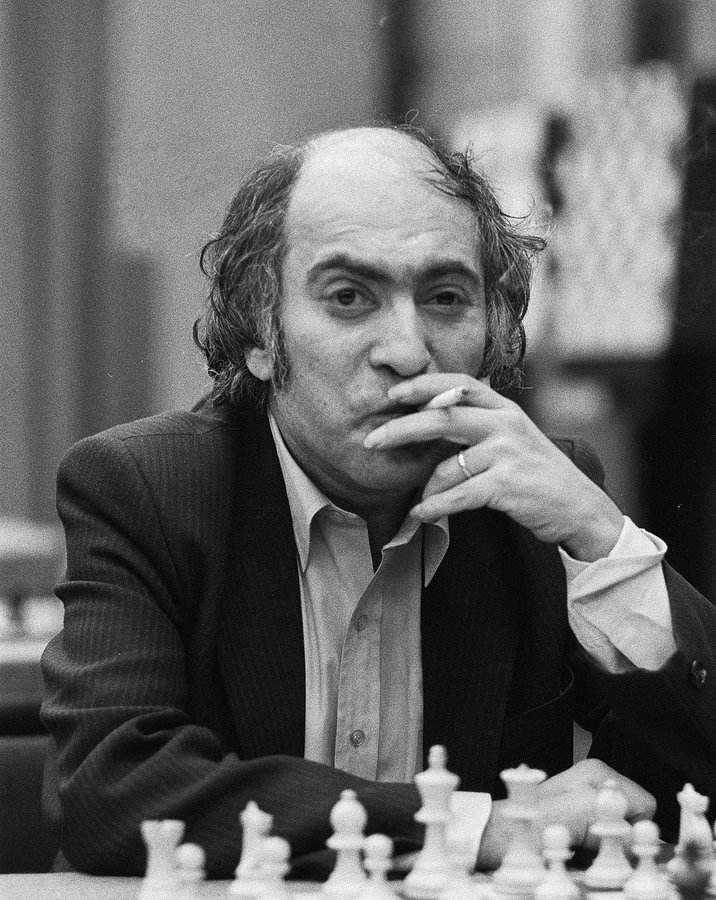


[Note that Jon Speelman also looks at the content of the article in video format, here embedded at the end of the article.]
 When a strong player looks at a position (in a real game of chess, not a problem) he or she will automatically see it not as a random collection of pieces but as a series of chunks — patterns that are recognisable and have known features. These will knit together to create some sort of assessment, though if it’s messy enough you may have explicitly to count the pieces to establish the material balance. And the patterns will also generate ideas of moves which may be profitable.
When a strong player looks at a position (in a real game of chess, not a problem) he or she will automatically see it not as a random collection of pieces but as a series of chunks — patterns that are recognisable and have known features. These will knit together to create some sort of assessment, though if it’s messy enough you may have explicitly to count the pieces to establish the material balance. And the patterns will also generate ideas of moves which may be profitable.
Normally some patterns will be very sharp in your mind, but some may be a little fuzzy. And this led to an incident years ago at the Taxco Interzonal of 1985 in Mexico (which I played in) when Misha Tal adjourned a game against one of the tail-enders and duly won it. He then started analysing with his opponent, showing him a better defence before it became clear that the queenside pawns — which were more or less irrelevant — had been set up incorrectly. His opponent insisted that they replay and Tal simply accepted this (rather than referring it to an Appeals Committee which would very likely have taken his side), before winning the game a second time a different way — though apparently, according to an article I’ve just found, not till 3am!
The exact queenside wasn’t important in this instance (apart from triggering the incident), but sometimes apparently insignificant changes can be crucial, and today I’m focussing on an instance of this with a position which was kindly shown to me by somebody I teach. He found it in Secrets of Practical Play by John Nunn and as I'm writing this (I'm sure I have it on my shelves but couldn’t find it immediately) has sent me a scan of John’s excellent analysis, which predates what I rediscovered by a decade and a half.
This position has occurred at least twice, in Kuzmin v Sveshnikov (Moscow 1973) and also Busquets v Mortazavi (San Mateo 1994).
There are several interesting questions, and perhaps these three are most pertinent:
It would be worthwhile if you have the time and inclination to try to solve some of these yourself if you’re a pretty strong player or with computer assistance (though preferably not just hanging on the magical silicon’s coat tails).
The full analysis appears in the game file, and I’ve also talked about it in the video version, but we can summarise as follows:
But Black can also try ...Rb8 or ...Ra7 (both given by John Nunn) which eventually lose to a sequence in which White wins the black queen and is then able to fork king and rook.
Instead, ...Bb7 avoids this (there’s now no fork at the end if White sacrifices the bishops) but White can take the exchange which should be decisive. And ...Bxc5 is another way to jettison the exchange, which should also lose eventually.
Continuing from this, I’ve got a couple more examples in which moving a pawn a single square changes the assessment.
How does it change the position if the h pawn is on h3 rather than h2?
Of course, there are lots of examples in which a combination ends and you have to assess the resultant endgame. This pair is fairly trivial but does illustrate the point.
To finish, a very pretty study by the great Leonid Kubbel which I’ve been sharing recently with anybody who will listen:
Select an entry from the list to switch between games
| Advertising |